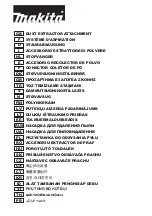
POLITEC s.r.l. | Manual Gapid WS – Ver. 1.0
10
6.6
WINDOWS
With this program GAPID detects attempts to break down of windows.
With maximum sensitivity is reached a radius of action of about 2.5 m.
N.B.:
S
ensitivity may depend on the type and thickness of the
glass.
6.7
SELF-LEARNING FOR ALARM
It is possible to record to sensor a different signal than standard ones (climbing, cut, break down, exc…).
Anytime will be reproduced a similar signal for intensity and duration as the one recorded during self-learning,
GAPID will give an alarm output.
To Have an alarm signal, with
low sensitivity
, the received signal must be identical to the one recorded, instead
with
high sensitivity
, the received signal may deviate slightly to the one recorded.
6.8
SELF-LEARNING FOR DISQUALIFICATION
It is possible to record to sensor a different signal than standard ones (climbing, cut, break down, exc…).
Anytime will be reproduced a similar signal for intensity and duration as the one recorded during self-learning,
GAPID will inhibits the alarm output for the duration of that signal.
To have a disqualification,
with high sensitivity
, the received signal must be identical to the one recorded,
instead with
low sensitivity
, the received signal may deviate slightly to the one recorded.
NB:
if recorded signal is large in duration there is the risk that your system can go into alarm before the
sensor has been able to correctly identify all the signal.
6.9
SELF-LEARNING FOR SPONTANEOUS VIBRATION
It is possible to record to sensor the spontaneous vibration of the fence.
In particular metallic grids and garden netting may fluctuate due to environmental effects such as wind and rain.
These oscillations NOT occur during attempts to climb over, cutting and similar.
It is so possible to teach the resonance of the fence to GAPID so that it gets filtered in order to prevent false
alarms due to these oscillations.
6.0
RESET
All the signals recorded during the self-learning functions will be cleared.






























